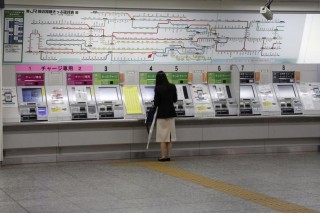Loading
Search
▼ Japan To Ease State Of Emergency In Osaka, Kyoto, Hyogo Prefectures
- Category:Other
TOKYO - The Japanese government decided Thursday to lift a state of emergency declared over the novel coronavirus in the western prefectures of Osaka, Kyoto and Hyogo, as experts judged that the number of new cases is on a clear downtrend.
Prime Minister Shinzo Abe is expected to announce his decision to ease the virus emergency later in the day, while leaving Tokyo and its neighboring prefectures as well as Hokkaido under the measure due to run through May 31.
As a result, only five of the country's 47 prefectures will remain under the state of emergency, but the impact is significant as they make up about a third of the Japanese economy.
Japan has so far prevented an explosive surge in infections and reduced the number of newly reported cases in recent weeks as a result of stay-at-home and business suspension requests made under the state of emergency.
Compliance with the measures has been voluntary as the country has not employed the hard lockdown steps seen in Europe and the United States.
The state of emergency was first imposed in limited areas such as Tokyo and Osaka and expanded nationwide last month. It was lifted for 39 prefectures last week.
Abe faces the task of keeping the downward trend in new cases intact while allowing more social and economic activities to resume at a time when the Japanese economy has already slipped into a recession.
Medical experts will check recent data on the number of newly reported infections, the availability of medical services, and the capacity to perform virus tests and trace infections.
One criterion used by the government and experts is whether new infections have fallen below 0.5 per 100,000 people in the past week. In Tokyo with a population of about 14 million, it means that the number of people infected with the virus would have to be fewer than 70 in one week.
Osaka, Kyoto and Hyogo in the Kansai area all cleared that threshold in the week until Tuesday. Tokyo and Kanagawa in the metropolitan area and Hokkaido in northern Japan were still above that level.
The government is tilting toward taking a group-based approach in lifting the state of emergency by dividing the prefectures into large groups based on geographical proximity and economic linkages.
One group consists of Osaka, Kyoto and Hyogo in the Kansai region, while the other includes Tokyo, Chiba, Kanagawa and Saitama. Hokkaido does not belong to either group but has been hit by a fresh wave of infections.
Tokyo is the worst hit among the 47 prefectures with more than 5,000 infection cases but in recent days new cases have been in the single digits.
Still, health experts say it is too early to lower the guard against COVID-19, the respiratory disease caused by the virus, and infections could surge.
Abe is calling for people to adjust to a new normal and change their behavior, as the coronavirus fight is expected to be protracted without effective treatment drugs and vaccines.
Since the end of the Golden Week holidays in early May -- a period during which the government sought to prevent travel beyond prefectural borders -- crowds have returned in urban areas, raising concern about a rise in infections in the days ahead.
The state of emergency is designed to prevent the collapse of health care systems due to the overcrowding of hospitals and lack of medical supplies.
On top of requests for staying home and temporarily shutting shops or businesses, prefectural governors can expropriate private land and buildings for emergency medical use. They can also requisition medical supplies and food from companies that refuse to sell them and punish those that hoard or do not comply.
Legislation to allow Abe to declare a state of emergency was passed in mid-March. In early April he announced a monthlong state of emergency until May 6. He then expanded it to the entire nation and extended it to May 31.
As the spread of the virus was kept in check, Abe lifted the emergency in the 39 prefectures on May 14, saying that more could follow even before the end of the month.
© KYODO
- May 22, 2020
- Comment (0)
- Trackback(0)


